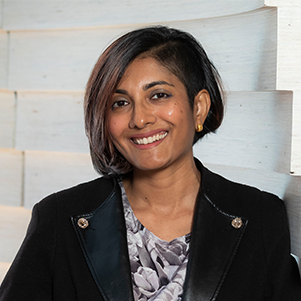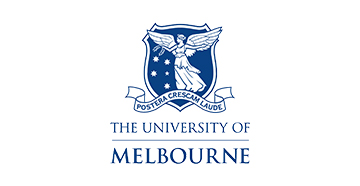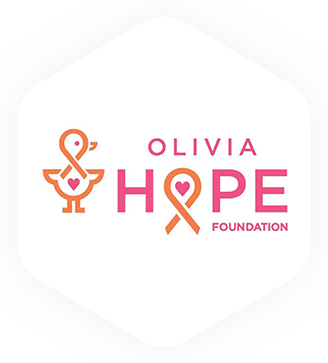Sorry! Registrations for this project has now closed.
But don’t worry, similar projects are coming soon, so leave your email address to be the first to know.
- Project starts17 September 2024
- PrerequisitesNone
- Project Duration7 weeks
- Course Price $4000
The Brief
The Olivia Hope Foundation is a non-profit organization dedicated to supporting children with cancer and their families. Founded in memory of Olivia, a vibrant young girl whose bravery and fight against cancer inspired many, the Foundation continues her legacy through impactful initiatives and collaborations.
The main goal of this project is to redesign the homepage to drive donations from a younger demographic. The current donor base is older, and the Olivia Hope Foundation would like to attract younger donors who resonate with the organization’s cause.

Meet Your Mentor

Announced Soon
Meet Your Mentor
Your mentor will be assigned to the project closer to the start date. You can be confident that no matter what project you choose, you will be guided by one of the world’s eminent industry practitioners. All of our mentors hold a minimum of 10-15 years experience in their field.
Your mentor will be assigned to the project closer to the start date. You can be confident that no matter what project you choose, you will be guided by one of the world’s eminent industry practitioners. All of our mentors hold a minimum of 10-15 years experience in their field.
During your projects, you will have a chance to practice and demonstrate competency in communication by successfully transmitting your ideas, thinking processes and solutions in a way that is easily understood by others.
Your mentor will observe and assess your competency across a number of communication related skills including;
Listening
Listening is the ability to accurately receive and interpret messages in the communication process. Listening is key to all effective communication and is not a passive process. In fact, the listener can, and should, be at least as engaged in the process as the speaker. The phrase ‘active listening’ is used to describe this process of being fully involved.
Presence
Your presence signals your capacity to stand out and make an impact on those around you. As you move into senior roles, this attribute becomes particularly important, however it is also an attribute that can support your ability to make a positive impression on hiring managers during a job interview process.
Articulation
An ability to express yourself in a coherent form helps to ensure people will understand your value. Great articulators are able to clearly communicate complex scenarios to their audience to ensure they are understood. This can go a long way to supporting your interview process and building confidence in those you are communicating with.
Inclusivity
In a modern work environment you are required to work with individuals from a variety of backgrounds, cultures and social positions. The most highly effective teams are those that are able to adapt and learn to work with a range of people and personalities.
A tried and true skill for any professional is the ability to present their ideas to an audience and effectively transmit the intended message. You will have the opportunity to strengthen your presentation skills in front of a live company stakeholder at the conclusion of your project(s).
Your mentor will observe and assess your competency across a number of presenting related skills including;
Introductions
Your presentations should take your audience on an engaging journey. How you start a presentation is critical to capturing your audience’s attention and establishing the premise and flow of the story line.
Presentation Structure
The structure of your presentations will determine whether your audience comes away with new insights and understanding or if they dis-engage from your message. Take the time to consider the structure of your ideas, the order they follow and how they how to support the audience on their journey to your conclusion.
Conclusions
Bring home your presentations with a conclusion that links back to your main points and introduction. The goal of a good conclusion to a presentation is leaving your audience with a tangible take-away that adds value to them. Knowing your audience and what is important to them is a key starting point to forming a strong conclusion.
Audience Feedback
At times you will be required to field questions and be ready to move off-script to maintain the value exchange between yourself and the audience. Great presenters encourage audience interaction and curate this dynamic to emphasise key points in the presentation without letting it derail their core message.
Presence
Your audience will feel as comfortable as you are. Therefore it is important to ensure you are as comfortable as possible with the material you are presenting and strive to maintain confidence in your own abilities to deliver the presentation. Practice makes perfect here so don’t get disheartened if it takes some time before you’re completely at ease delivering your message in a presentation format.
The best solutions are most often formed through the input of multiple people. In modern work environments, small team collaboration is an increasingly sought after skill by employers, as agile ways of working are adopted that bring together multiple disciplines around a unified challenge.
Your mentor will observe and assess your competency across a number of collaboration related skills including;
Interaction
Effective collaboration with others is one of the primary skills hiring managers look for in new talent, particularly for digital roles where you are required to work closely with individuals from all different departments and skill sets. Collaboration is the make up of all your interactions with your teammates and stakeholders.
Teamwork & Leadership
There will be times during your Harness Projects where you will need to work as a team to synthesise research or support each other with feedback and advice. You may be called on to lead as the group recognises a specific skill set in you in relation to a task at hand. Your communication skills will be your foundation for success here, so take the opportunity to step into leadership roles and inspire confidence in yourself and others.
Conflict Resolution
Conflict, arguments and change are a natural part of our lives and often helps us learn more about differing beliefs, cultures and backgrounds. How we respond to these moments goes a long way to determining how quickly a group, organisation or culture can find a foundation of harmony to continue working / relating effectively, to the task at hand.
Initiative & Contribution
Showing initiative is doing things without being told; finding out what you need to know, continuing when things get tough, and spotting and taking advantage of the opportunities that others pass by. You act, instead of reacting, at work. Initiative has become increasingly important in today’s workplace. Organizations want employees who can think on their feet and take action without waiting for someone to tell them what to do. After all, this type of flexibility and courage is what pushes teams and organizations to innovate and to overcome competition.
Real-world projects can bring unexpected challenges and opportunities. Just like a real-world work environment, your capability for resourcefulness can go a long way to securing a successful career. Your mentor will guide you and assess you on your ability to demonstrate self-direction when required, problem solving and project management capabilities and your openness to learning from circumstances that arise. We focus on this to ensure that our graduates are equipped with the internal resourcefulness to excel in the workplace.
Your mentor will observe and assess your competency across a number of resourcefulness related skills including;
Self-direction
Self-direction is the ability to regulate and adapt your behavior to the demands of a situation in order to achieve one’s goals. Sometimes related to willpower, it describes the extent to which a person demonstrates integrated purposefulness rather than a disorganised set of reactive impulses. Throughout your project, there will be moments to receive guidance from others and moments to make the experience your own through self-directed learning. Ask questions and take actions that help to align your trajectory to the outcomes you have set for yourself during the project.
Problem Solving
Problems solving is at the centre of what many people do at work every day. Whether you’re solving a problem for a client (internal or external), supporting those who are solving problems, or discovering new problems to solve, the challenges you face can be large or small, simple or complex, and easy or difficult. Your project is a problem solving sandbox, with your project brief forming the overarching problem you are attempting to solve.
However, within that overarching problem are countless mini-problems that you will encounter on your journey.
Project Management
Project management skills are not simply reserved for those with the “Project Manager” title. In work, we all have a responsibility to apply effective project management skills to the work that we do. This includes managing our time, planning out the activities we intend to take to reach our goals and making the best use of the resources and support at hand. The earlier you can get into a project management mindset for your project the better it will go. Plan your time early and plan often. By staying on top of this during your projects, you will ensure a smooth run to the finish line instead of a heavy workload at the very end. This skill will serve you well in ensuring you maintain a work life balance in your career.
Learnability
Learnability is being seen by some companies as the most sought-after attribute for both employees and job candidates, even up to senior executive levels. Learnability describes someone’s aptitude for learning, developing new skills and adopting novel ways of doing things. Those individuals who are highly proficient learners are seen as adaptable and
therefore able to keep pace with the dizzying level of technological and commercial change companies are currently coping with. Disruptive innovation doesn’t disrupt them – they figure it out, adapt and are rapidly productive in the new environment.
You will demonstrate empathy by listening to your end-users and stakeholders and appropriately translating their needs, motivations and pain points into your final recommendation solution. A number of important factors contribute your over empathy as a working professional. This includes compassion for your colleagues and customers, an openness to alternative ideas and ways of working, a curiosity to understand others on a deeper level and the social awareness to foresee the impacts of the work you contribute.
Your mentor will observe and assess your competency across a number of empathy related skills including;
Compassion
When you sit in a room with your colleagues or your clients do you ever look for where there’s a pain in the room? And if you do notice, do you feel content enough to do something about it? Studies are finding these simple acts found in compassionate workplaces are helping to produce more productive, efficient and happier employees in organizations. Differing slightly from empathy which allows us to mirror someone else’s feelings, or altruism which is an action that benefits someone else, compassion is an
emotional response when perceiving suffering and involves an authentic desire to help. At Harness Projects, we strive to build a team culture of compassion. We’re all on this learning journey together and the more we can demonstrate moments of compassion for one another and all of our unique experiences during the project the stronger the bond we will form and the better the outcomes will be for everyone involved.
Openness
Openness is one of the big 5 personality traits. People who demonstrate high levels of openness tend to be linked to high levels of creative thinking, curiosity and flexibility. Openness includes a receptivity to new ideas as well as an attention to the inner feelings of others. These are traits that will support you well in the problem solving work you do.
Curiosity
Curiosity is a quality related to inquisitive thinking such as exploration, investigation, and learning. Curiosity as a behavior and emotion is considered the driving force behind not only human development, but developments in science, language, and industry. Every problem you encounter will ask for a level of curiosity from you. The more you can surrender to that curiosity and reserve assumptions or early judgement, the more space you will have to seek out novel and effective solutions to the design challenge at hand. Not only that, but a curiosity in how you develop during this learning program is a self-awareness trait that hiring managers will value highly.
Social Awareness
Having an awareness of the impact of your work is critically important to how you can contribute to the world we want to live in. You are in an extremely fortunate position to be part of an education program along with learning a skill that can help shape the experiences of millions of less fortunate people. The projects we curate at Harness Projects are all about applying all of your efforts to meaningful causes. It hopefully shows us what is possible and demonstrate that all of our efforts when combined contribute to the type of world we want to live in.
Agile behaviors consist of specific traits including self-reflection, resilience, creativity and a growth mindset. When brought together, these skills contribute to an individual who has the ability to stay agile in a changing work environment and a capacity to evolve to take advantage of opportunities for growth.
Your mentor will observe and assess your competency across a number of agile related skills including;
Self-reflection
Self reflection is like looking into a mirror and describing what you see. It is a way of assessing yourself, your ways of working and how you learn. To put it simply ‘reflection’ means to think about something. Reflecting helps you to develop your skills and review their effectiveness, rather than just carry on doing things as you have always done them. It is about questioning, in a positive way, what you do and why you do it and then deciding whether there is a better, or more efficient, way of doing it in the future.
Resilience
Resilience is the ability to cope with unexpected changes and challenges in your work and life. It’s not always possible to prevent stressful or adverse situations, but you can strengthen your capacity to deal with these challenges. You can start to build resilience by asking yourself; What can I do to get back on track? I can’t control everything, so what is in my control? Can I change something I’m doing to make things better? What can I learn from this? There are no guarantees that real world projects will be smooth sailing. You may need to nd inner courage and resilience to get through challenging moments in your project experience. This is a sandbox for your growth but remember to reach out for support when you need it.
Creativity
Creativity is the act of turning new and imaginative ideas into reality. Creativity is characterised by the ability to perceive the world in new ways, to nd hidden patterns, to make connections between seemingly unrelated phenomena, and to generate solutions. Creativity involves two processes: thinking, then producing. Your project-based learning experience will be a creative endeavor in forming your UX solution. There are ways to enhance your creativity, here are some starters; Seek out associations, that is connections between questions, problems or ideas from unrelated fields. Pose queries that challenge common wisdom. Scrutinize behavior of customers and competitors.
Growth Mindset
A growth mindset describes the underlying belief people have about learning and intelligence. When students believe they can get smarter, they understand that effort makes them stronger. Therefore they put in extra time and effort, and that leads to higher achievement. This is because they worry less about looking smart and they put more energy into learning. We all have triggers that bring us back to a fixed mindset. It may be when we face challenges or criticism. To remain in the ‘growth’ zone, we must identify and work with these triggers. Once we can identify the triggers, we can learn to talk back to it, persuading it to collaborate with us in pursuing our goals.
Problem Statements & User Stories
A problem statement is a concise description of a problem or issue a project seeks to address. A user story is an informal, general explanation of a software feature written from the perspective of the end user.
How it will be practiced and demonstrated
You will learn how to develop problem statements and user stories in order to drive your design process forward from a user-centric perspective. This technique is a fundamental part of UX design and Product Management and is used extensively in related fields in agile approaches to work.
Prototyping
Prototyping is the stitching together of your wireframes into a format that can be interacted with. Typically used for usability testing, getting feedback from stakeholders or to simply to test out an interaction before investing more heavily in its development. You will get an opportunity to practice prototyping on our fundamentals and advanced usability & wireframing projects.
How it will be practiced and demonstrated
During your project, you will learn how to put together a prototype using a leading UX tool called Figma. Students in our fundamental projects will learn general interactions and linking. Advanced students will take things a step further, add advanced interaction functionality to their prototype and learn how to prepare hand-off documentation.
Requirements Gathering
Requirements gathering is the practice of interviewing key stakeholders of a project to understand what is required to be solved. This is an important skill for anyone working in the world of problem solving, which these days affects almost all career paths.
How it will be practiced and demonstrated
All of our projects include direct access to a company stakeholder who will form the client on your project. You will get an opportunity to learn how to capture business requirements from stakeholders through a live workshop and translate this into meaningful actions to drive your design, product or marketing process during your project.
Sketching
Sketching is recommended as a fast and light-touch method of getting your initial design ideas down on paper. It can be used as a feedback tool or simply to formulate your own thinking during your design process. You don't need to be an artist to sketch well, simply learning some of the basics can help to get your design started on the right foot.
How it will be practiced and demonstrated
During your project, you may be required to sketch out your design ideas before committing the extra effort to create a wireframe or prototype. Not just a UX Design step, this technique can be useful to learn for Product Managers and Digital Marketers alike.
Usability Testing
When we have access to an existing product, usability testing is a staple of the iterative design process. It enables UX Designers & Product Managers to learn what works and what doesn't from their product designs and is another effective method of customer research.
How it will be practiced and demonstrated
Students on our UX & Product Fundamentals projects as well as our Advanced Prototyping projects will get an opportunity to practice running usability testing sessions to get feedback from end-users and inform their final designed solution.
Wireframing
Wireframes are the blueprints of the final design presented to end users. We strip out a lot of the 'aesthetics' and focus primarily on the structure of pages / screens so we can get our information structured effectively and ultimately solve the initial user tasks that were identified earlier in the design process.
How it will be practiced and demonstrated
During your project, you will put together wireframes for your design solution using a leading UX tool called Figma. Our UX Design and Product Management students will get a chance to present their wireframed solution to represent the solution design they have created for their client.

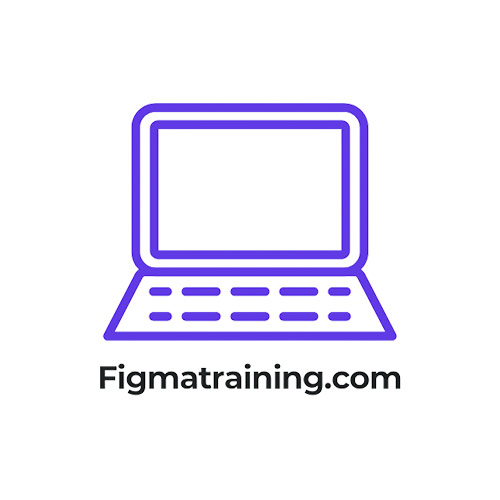
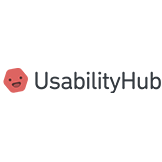
We've partnered with IDF a leading organisation in the UX industry to ensure you receive the most industry-relevant learning experience possible.
Overall, I really enjoyed this learning experience. It was a highlight for me, considering the challenges of COVID-19. The live weekly classes, access to a mentor and employability scorecard report at the end were features that I found particularly valuable.
